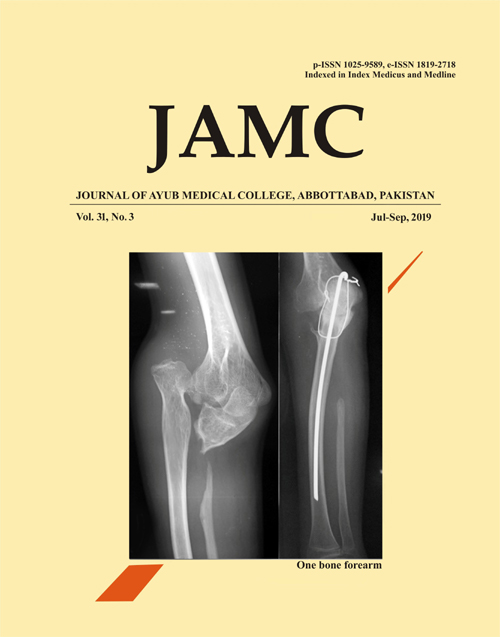A BREATH CLOSE TO DEATH: A CASE REPORT OF IDIOSYNCRATIC REACTION TO WELDING FUMES
Abstract
A 39-year-old gentleman presented to emergency department with a few hours' history of acute shortness of breath, cough and haemoptysis that developed whilst welding a steel tank in a closed container. He was welder by profession for thirteen years with no significant past medical history. The arterial blood gas showed severe oxygenation impairment and he was intubated for mechanical ventilation. The radiographs showed bilateral widespread interstitial shadowing. The echocardiography showed normal heart and ruled out cardiogenic pulmonary oedemic. The microbiological investigations were all normal. He was treated as Acute Respiratory Distress Syndrome (ARDS) secondary to exposure to welding metal fumes in a closed container. He was given limited tidal volume invasive ventilation, extubated successfully after twelve days, transferred to respiratory ward for rehabilitation and discharged few days later. Exposure to welding metal fumes at work place is a major occupational health hazard worldwide. It can cause ARDS and other respiratory illnesses such as bronchitis, metal fumes fever and chronic pneumonitis. The pathogenesis of ARDS due to welding metal fumes involves direct inhalational injury and/or immune system dysfunction. Welding metal fumes related ARDS remains the diagnosis of exclusion and all other causes must be ruled out. The key to treatment is ventilation support with early endotracheal intubation. Appropriate precautionary measures are advised to avoid occupational health hazards in welding profession.
Keywords: Emergency; ARDS; Haemoptysis; Welding; BronchitisReferences
Tessier DM, Pascal LE. Activation of MAP kinases by hexavalent chromium, manganese and nickel in human lung epithelial cells. Toxicol Lett 2006;167(2):114-21.
Pascal LE, Tessier DM. Cytotoxicity of chromium and manganese to lung epithelial cells in vitro. Toxicol Lett 2004;147(2):143-51.
Borska L, Fiala Z, Ctirad A, Krejsek J, Tejral J. Health risk of occupational exposure in welding processes II. Immunological effects. Acta Medica (Hradec Kralove) 2003;46(1):31-5.
Horita N, Hashimoto S, Miyazawa N, Fujita H, Kojuma R, Inoue M, et al. Impact of Corticosteroids on Mortality in Patients with Acute Respiratory Distress Syndrome: A Systematic Review and Meta- analysis. Intern Med 2015;54(14):1473-9.
Hough CL. Steroids for acute respiratory distress syndrome? Clin Chest Med 2014;35(4):781-95.
Hermans G, Van den Berghe G. Clinical review: intensive care unit acquired weakness. Crit Care 2015;19:274.
Argov Z, Latronico N. Neuromuscular complications in intensive care patients. Handb Clin Neurol 2014;121:1673-85.
Wunsch H, Guerra C, Barnato AE, Angus DC, Li G, Linde-Zwirble WT. Three-year outcomes for Medicare beneficiaries
Downloads
Published
How to Cite
Issue
Section
License
Journal of Ayub Medical College, Abbottabad is an OPEN ACCESS JOURNAL which means that all content is FREELY available without charge to all users whether registered with the journal or not. The work published by J Ayub Med Coll Abbottabad is licensed and distributed under the creative commons License CC BY ND Attribution-NoDerivs. Material printed in this journal is OPEN to access, and are FREE for use in academic and research work with proper citation. J Ayub Med Coll Abbottabad accepts only original material for publication with the understanding that except for abstracts, no part of the data has been published or will be submitted for publication elsewhere before appearing in J Ayub Med Coll Abbottabad. The Editorial Board of J Ayub Med Coll Abbottabad makes every effort to ensure the accuracy and authenticity of material printed in J Ayub Med Coll Abbottabad. However, conclusions and statements expressed are views of the authors and do not reflect the opinion/policy of J Ayub Med Coll Abbottabad or the Editorial Board.
USERS are allowed to read, download, copy, distribute, print, search, or link to the full texts of the articles, or use them for any other lawful purpose, without asking prior permission from the publisher or the author. This is in accordance with the BOAI definition of open access.
AUTHORS retain the rights of free downloading/unlimited e-print of full text and sharing/disseminating the article without any restriction, by any means including twitter, scholarly collaboration networks such as ResearchGate, Academia.eu, and social media sites such as Twitter, LinkedIn, Google Scholar and any other professional or academic networking site.










